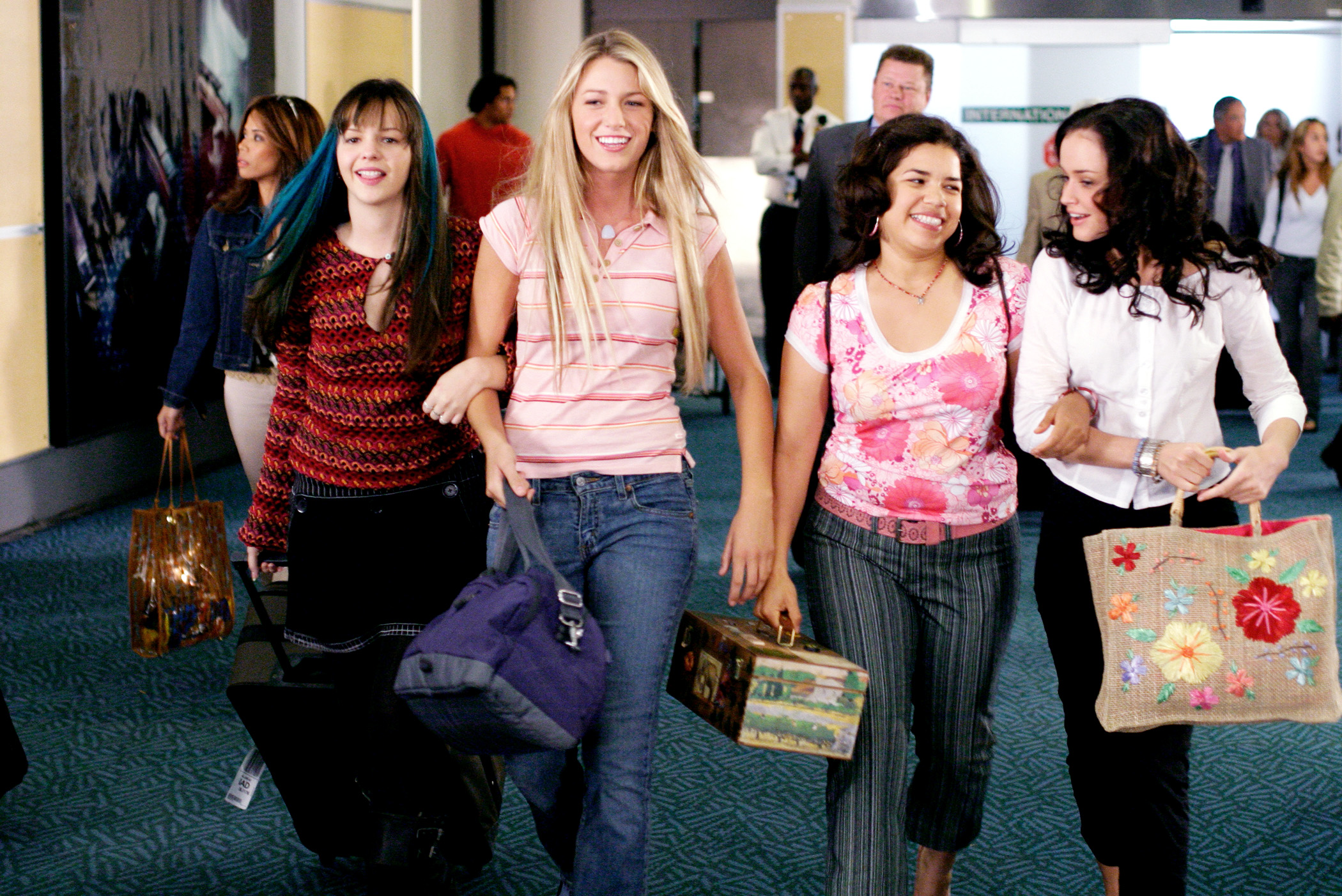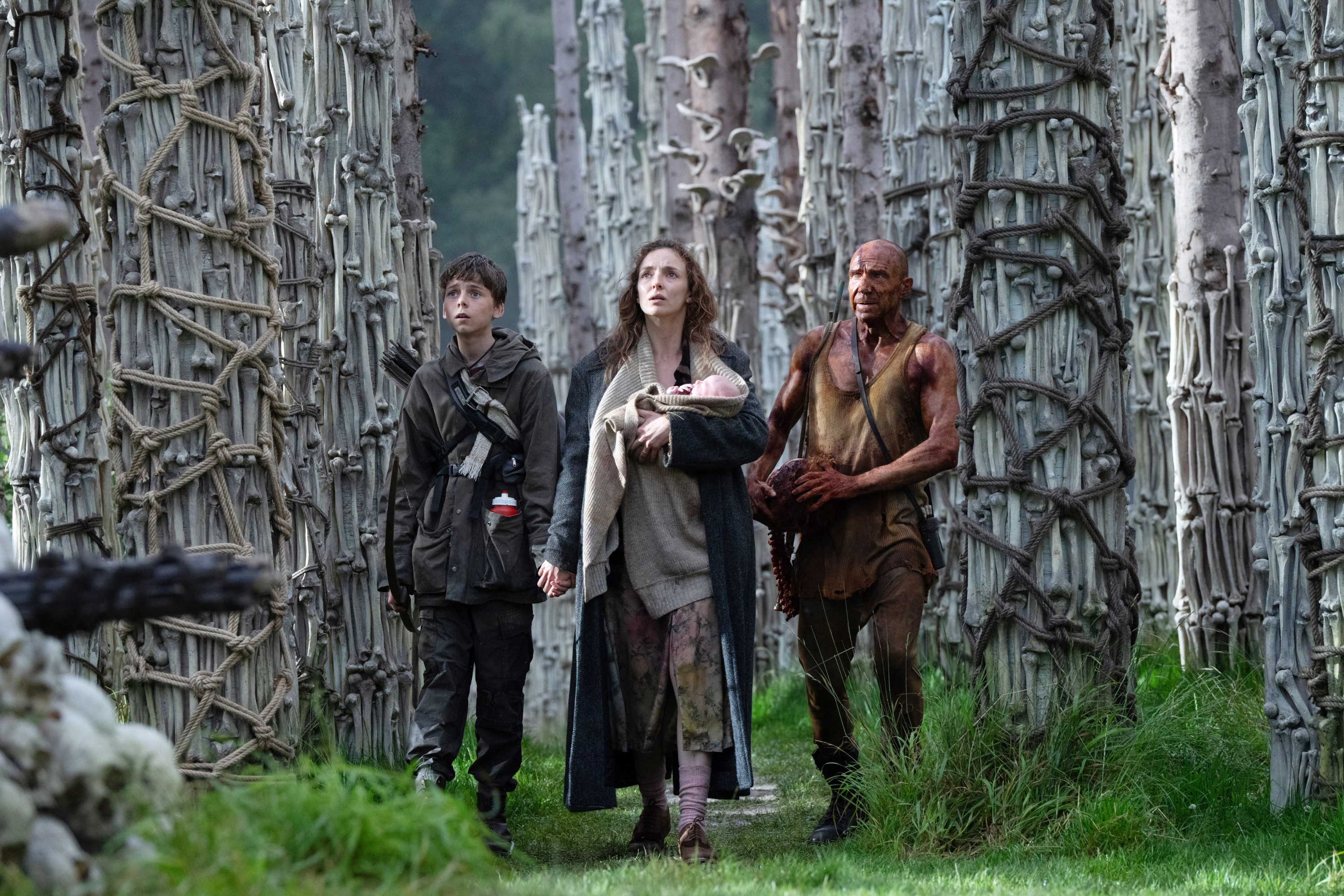When the coming-of-age film “The Sisterhood of the Traveling Pants” was released in 2005, it quickly became a favorite among young audiences thanks to its thoughtful perspective on teenage issues and an impeccably cast ensemble of newcomers (Blake Lively in her first role and America Ferrera coming off of “Real Women Have Curves) and rising TV stars (Amber Tamblyn, Alexis Bledel). In the years since, the movie’s cult has only grown, and when “Sisterhood” screened at the American Cinematheque‘s Aero Theatre last week in honor of its 20th anniversary, the theater was packed with devoted fans.
Director Ken Kwapis, actor Jenna Boyd, producer Christine Sacani, and executive producer Kira Davis participated in a post-screening Q&A and talked about the film’s making and legacy. Kwapis admitted that when he was first approached about directing “Sisterhood,” it didn’t sound like a promising job. “I was sent the script by Warner Bros. with a one-line description,” he said. “‘This is a story about four girls who share a pair of pants.’ And I thought, ‘Okay, this is what my career has come to.’”
When Kwapis read the book, however, he was “knocked out” by its emotional range and saw a way to make a film in the tradition of one of his all-time favorites. “I remember my initial pitch meeting with Warner Bros.,” Kwapis said. “I said, ‘I am not a teenage girl, but I feel connected to each of the four characters in a deep way.’ I compared ‘Sisterhood’ to a film that’s very important to me, ‘American Graffiti.’”

Kwapis saw similarities between the way each story followed four friends (teenage boys in “Graffiti,” girls in “Sisterhood”) and in their structures, where most of the time the friends were seen in separate storylines. He also thought that, like “American Graffiti,” “Sisterhood of the Traveling Pants” could give teenagers a movie that treated their problems seriously and empathetically, without sacrificing healthy doses of comedy.
That tricky tonal balance is exemplified in Boyd’s performance as a leukemia-stricken friend of Tamblyn’s character, Tibby. In spite of the potential for mawkishness, the storyline never loses its sense of humor and doesn’t veer into excessive sentiment, something Boyd said came from Kwapis’ direction. “Ken would constantly tell me to dial it back,” she said. “I always felt a little self-conscious that it wouldn’t be enough, but he was able to see that a more subdued performance would be more powerful.”
Boyd also credited the script by Elizabeth Chandler and Delia Ephron with doing some of the heavy lifting when it came to the film’s emotional effects. “The writing was a huge gift,” she said. “The words on the page were so powerful that I felt like my job was made quite a bit easier. How can you say that stuff without it being touching and endearing?”
According to Kwapis, casting the four leads was largely an intuitive process where it quickly became apparent who was right for the movie — even though, in the case of Lively, her resume was completely blank when the director turned over her headshot to see what she had done. “Blake had never held a paying job in her life before this film,” Kwapis said. The big challenge for the director was taking these four actors who had never met and wouldn’t have much rehearsal time and making them convincing on screen as lifelong friends.
“I created exercises for them, one of which was to send them out shopping in character,” Kwapis said. “We gave each actor a hundred dollars, and their job was to go to a thrift store and purchase something in character and advise the others. They spent several hours together and developed a shorthand, and I felt that was more valuable than trying to read scenes together.”
One thing that stands out about “Sisterhood” 20 years after its release is how much scale it has — the film traverses several countries and has a visual style (courtesy of “Mishima” and “American Gigolo” cinematographer John Bailey, a frequent Kwapis collaborator) that serves Kwapis’ intention to treat his young people with the same degree of filmmaking prowess that would be applied to more adult subject matter. Sacani said that from a production standpoint, the globetrotting posed numerous challenges, as did the scheduling demands of a film juggling four protagonists of equal importance.

“Blake Lively was still in high school, and I remember having to push the start of the shoot for a cheerleading competition,” Sacani said. “We started in Greece and then went to Vancouver, which was the main location, and then we ended in Mexico.” Production designer Gae Buckley hired full art departments in each local community, which Sacani felt gave each section its own distinct and authentic look — she also said that the fact the production could only afford to bring a small group of department heads to each country meant the core crew of “Sisterhood” formed an unusually intense bond.
A similar bond developed between Boyd and Tamblyn, with whom Boyd played most of her scenes. “I remember her not treating me like a kid at all,” Boyd, who was 12 at the time of the shoot, said. “She just jumped in the deep end with me, and I felt very grown-up.” Boyd added that her friendship with Tamblyn intensified when they shot the documentary that’s seen in pieces throughout the film. “We actually did film a documentary. We went out and interviewed people and put it on film, and that really solidified our dynamic.”
When it came to releasing and marketing “The Sisterhood of the Traveling Pants,” Davis said that the studio leaned into the movie’s strengths. “ The fundamental concept of friendship was universal, and that was really the base of it,” she said. “I think the reason why it’s had this staying power for so long. It’s not a movie that’s typical for young girls; it has some tragedy in it. Dealing with loss of virginity, suicide…it was unusual in that time, and it wasn’t a fluff movie. But I think the substance and Ken’s nuanced work with the girls and their talent really sold the movie.”
On Kwapis and Sacani’s IMDb pages, a third “Sisterhood” movie is listed as a future project. (“The Sisterhood of the Traveling Pants 2” was released in 2008 and directed by Sanaa Hamri.) Kwapis confirmed that he’s hoping to make it, though he said figuring out the story has been difficult for one obvious reason. “The four actors are now much older than the characters in the final book of Ann Brashere’s series,” Kwapis said. “So it’s been a real challenge to figure out a story that really works for these characters in their mid-to-late thirties while still trying to honor what Anne created. I would say it’s a little bit on pause, but no one’s giving up. I’m hopeful.”
“The Sisterhood of the Traveling Pants” is now streaming on all digital platforms.



